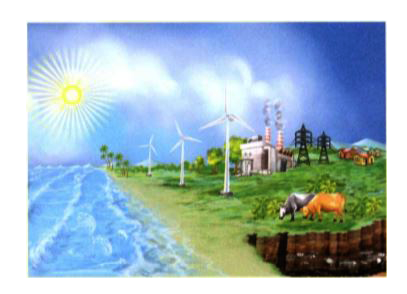Solid, liquid, light, gas
To solve the question, we need to identify which of the four options is different from the others. The options given are solid, liquid, light, and gas.
1. Identify the Categories:
- First, we categorize the options. Solid, liquid, and gas are all states of matter. They describe the physical forms that substances can take.
2. Analyze Each Option:
- Solid: A state of matter with a definite shape and volume.
- Liquid: A state of matter that has a definite volume but takes the shape of its container.
- Gas: A state of matter that has neither a definite shape nor a definite volume and expands to fill its container.
- Light: This is not a state of matter. Instead, it is a form of energy that travels in waves.
3. Determine the Odd One Out:
- Since solid, liquid, and gas are all states of matter, while light is a form of energy, light is the option that does not belong to the same category.
4. Conclusion:
- Therefore, the odd one out from the group is light.
Final Answer:
The odd one out is light.
---
- First, we categorize the options. Solid, liquid, and gas are all states of matter. They describe the physical forms that substances can take.
- Solid: A state of matter with a definite shape and volume.
- Liquid: A state of matter that has a definite volume but takes the shape of its container.
- Gas: A state of matter that has neither a definite shape nor a definite volume and expands to fill its container.
- Light: This is not a state of matter. Instead, it is a form of energy that travels in waves.
- Since solid, liquid, and gas are all states of matter, while light is a form of energy, light is the option that does not belong to the same category.
- Therefore, the odd one out from the group is light.
The odd one out is light.
Topper's Solved these Questions
- MODEL TEST PAPERS BOOK - ICSECHAPTER - MODEL TEST PAPERS EXERCISE - TEST PAPER I (SECTION II) Give reasons for the following
4 Videos
- MODEL TEST PAPERS BOOK - ICSECHAPTER - MODEL TEST PAPERS EXERCISE - TEST PAPER I (SECTION II) Explain the following terms
3 Videos
- MODEL TEST PAPERS BOOK - ICSECHAPTER - MODEL TEST PAPERS EXERCISE - TEST PAPER I (SECTION I) Choose the correct option to fill in the blank.
5 Videos
- MATTERBOOK - ICSECHAPTER - MATTEREXERCISE - Picture Based Questions
2 Videos
- PHYSICAL QUANTITIES AND MEASUREMENT BOOK - ICSECHAPTER - PHYSICAL QUANTITIES AND MEASUREMENT EXERCISE - Picture-Based Questions
1 Videos
Similar Questions
Knowledge Check
Assertion: On heating, a solid usually change to a liquid and the liquid on further heating change to the gaseous state.
Reason : Arrangement of constituent particles is different in solid, liquid and gaseous state.AIf both assertion and reason are true and reason is the correct explanation of assertionBIf both assertion and reason are true but reason is not correct explanation of assertion.CIf assertion is true but reason is false.DIf both assertion and reason are false.
What is a longitudinal wave ? In which medium: solid, liquid or gas, can it be produced ?
View SolutionState which expands more, when heated to the same temperature : solid, liquid or gas ?
View SolutionCompare densities of solids, liquids, and gases.
View SolutionList the characteristics of solids, liquids and gases
View SolutionIdentify a solid , a liquid and a gas in the picture given below :
a. Solid :____
b.Liquid:____
c.Gas: ____

View SolutionAssertion : Bulk modulus of elasticity can be defined for all three states of matter, solid liquid and gas.
Reason: Young's modulus is not defined for liquids and gases.
View SolutionFor the elements sodium and phosphorus, state the following
The physical state of each chloride at room temperature (i.e. solid, liquid or gas),
View Solution
